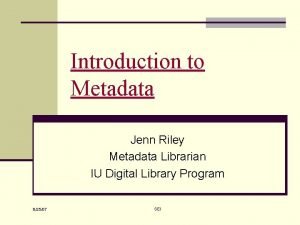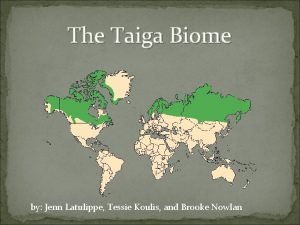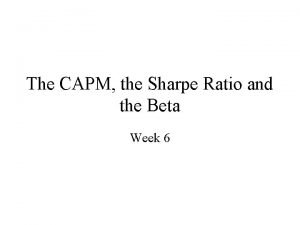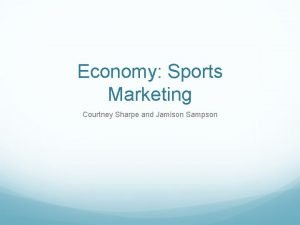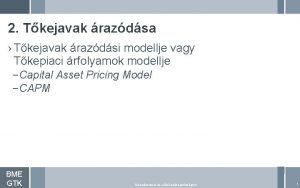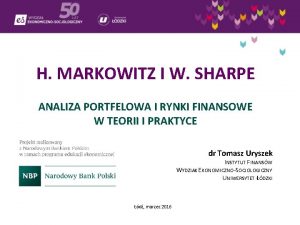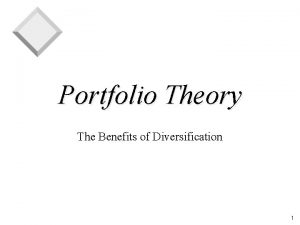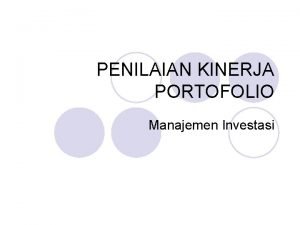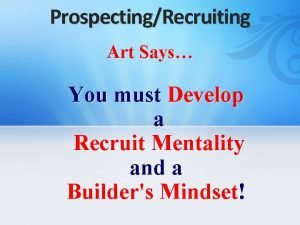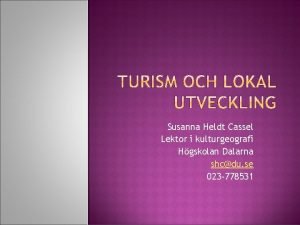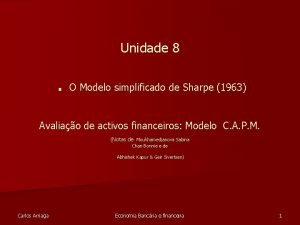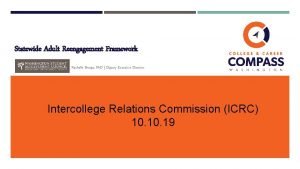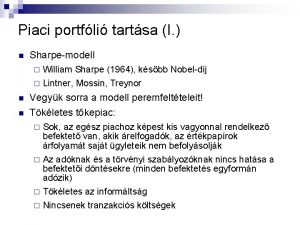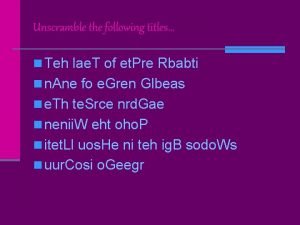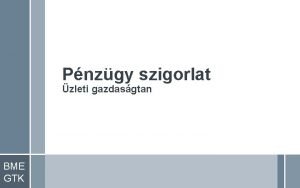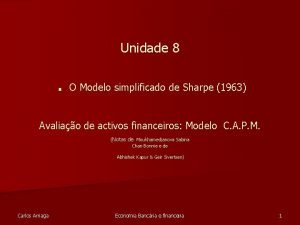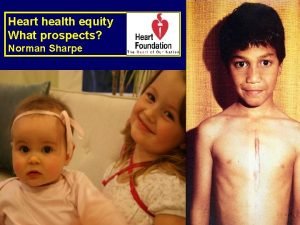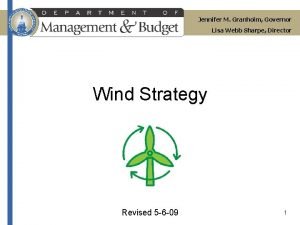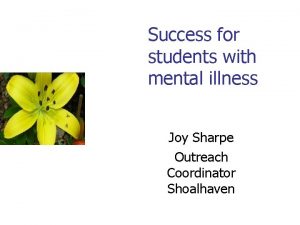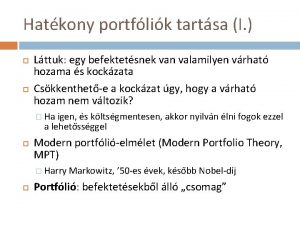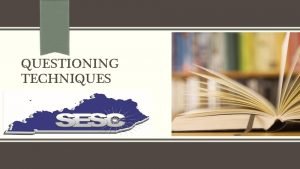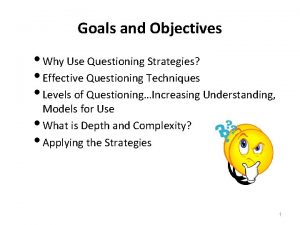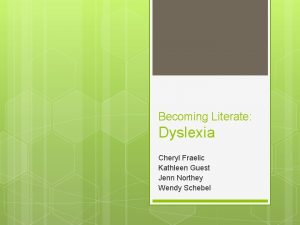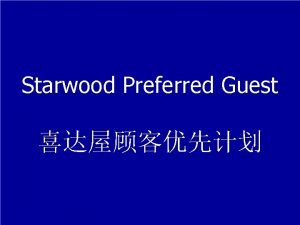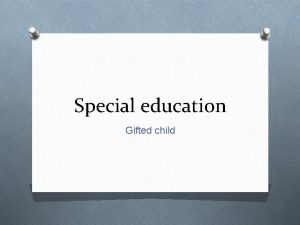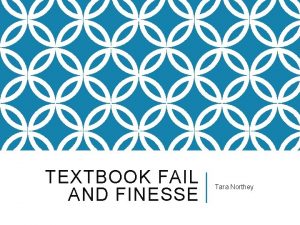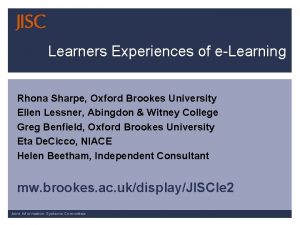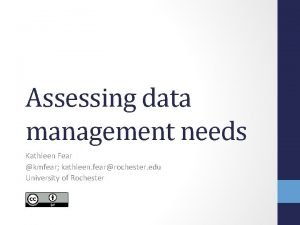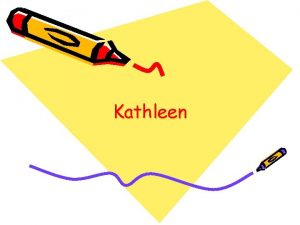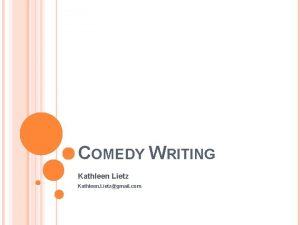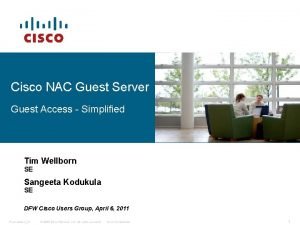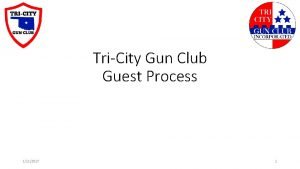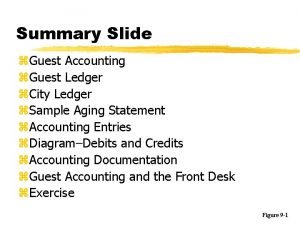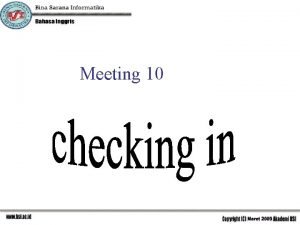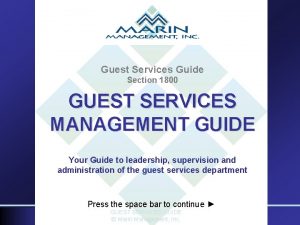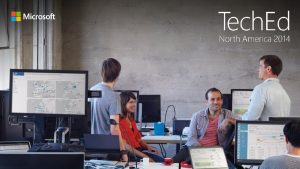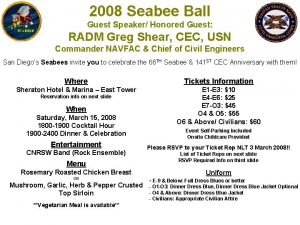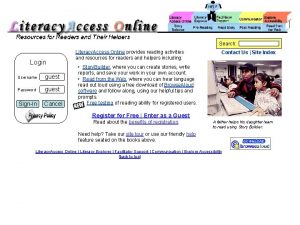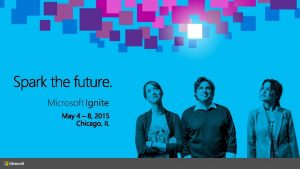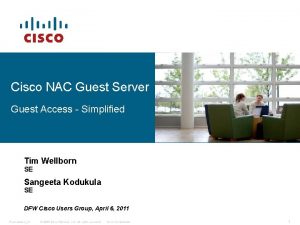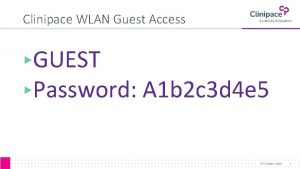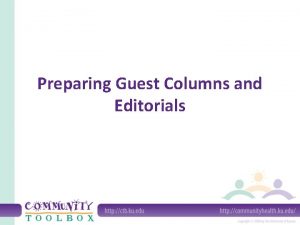GIFTED LEARNERS Kathleen Guest Jenn Northey Lauren Sharpe


























- Slides: 26

GIFTED LEARNERS Kathleen Guest Jenn Northey Lauren Sharpe Carrie Quant Kim Thorne Mariko Ihara Andrea Orantes

WHAT IS GIFTEDNESS? A complex of intelligence(s), aptitudes, talents, skills, expertise, motivation and creativity that lead the individual to productive performance in areas or domains or disciplines valued by the culture and time. (Feldhusen, 1992) BC Ministry of Education

WHAT IS GIFTEDNESS? read well and widely have an unusually large vocabulary are widely informed about many topics have a keen sense of humor are creative and imaginative work quickly and remembers with little practice have a long attention span see abstract relationships, alternative views be curious and/or have strong interests. Think About: A child with a disability can not be Gifted “Twice-exceptional” making them seem average

BACKGROUND 350 B. C Plato 1700’s Jefferson 1800’s Born Intelligent 1900’s Standardized Test Historically, gifted students have been identified by excellence in linguistic or logical mathematic realms Perceptions of giftedness vary Now viewed as development of multiple intelligences Think About: Gifted students make everyone else in the class smarter by providing a role model or a challenge. Students are more likely to model their behavior on those Who have similar capabilities

BACKGROUND: THEORIES Howard Gardner § Multiple intelligences: performance within each of the intelligences is developmental. Development may or may not occur at the same rate for all of the intelligences. Joseph Renzulli § § Three ring conception: interaction of three basic clusters of human traits (above average abilities, high levels of task commitment, and high levels of creativity) Interaction of these basic traits may result in gifted behaviours in general performance areas.

BACKGROUND: INCIDENCE According to the BC Ministry of Education (2012): § In 2001 -2002: 16, 986 students were identified as being gifted. § In 2007 -2008: 8, 966 students

BACKGROUND: NEUROLOGICAL DEVELOPMENT Many neurological theories for giftedness, such as increased brain size and mass, increased glial cells, or different sized neurons. Some research suggest that genes play some role in intelligence May be related to how the cortex matures § Researchers at the National Institute of Health discovered that the cortex of those with a higher IQ, thickens at a later age than others.

LEARNING PROFILES The The Successful Challenging Underground Dropouts Double-Labeled Autonomous Learner

LEARNING PROFILES The Successful Perfectionist High Achiever Seeks Teacher Approval and Structure Non-Risk Taking Two chemists go into a Does Well Academically restaurant. Accepts and Conforms The first one says, ‘I think I’ll have an H 2 O. The second says, ‘I think I’ll have an H 2 O too’ – and he died.

LEARNING PROFILES The Challenging § Corrects teacher § Questions Rules and Policies § Honest and Direct, § Demonstrates Inconsistent Work Habits § Poor Self-Control § Creative § Prefers Highly Active and Questioning Approach, § Stands Up For Convictions § Competitive What happened to the man who was stopped for having sodium chloride and a nine-volt in his car?

LEARNING PROFILES The Underground § Denies Talent A neutron walks into a bar. He asks the bartender, ‘How much for a beer? ’ The § Resists Challenges bartender offers him a warm smile and says, ‘For you, no charge. ’ § Wants to Belong Socially § Changes Friends § They begin to deny their talent in order to feel more included with a non-gifted peer group. Students who are highly motivated and intensely interested in academic or creative pursuits may undergo an apparently sudden radical transformation, losing all interest in previous passions.

LEARNING PROFILES The Dropouts § Doesn’t Complete Tasks § Pursues Outside Interests § ‘Spaced Out’ in Class § Self-Abusive § Isolates Self § Creative § Criticizes Self and Others § Disruptive and Acts Out § Seems Average or Below A proton and a neutron are walking down the street. The proton says, ‘Wait, I dropped an electron help me look for it. ’ The neutron says, ‘Are you sure? ’ The proton replies, ‘I’m positive’

LEARNING PROFILES The Double-Labeled § Gifted children who are physically or emotionally handicapped in some way, or who have learning disabilities. § They show symptoms of stress; they may feel discouraged, frustrated, rejected, helpless, or isolated. § Demonstrates Inconsistent Work § Seems Average or Below § May Be Disruptive or Acts Out Heisenberg was driving down the Autobahn whereupon he was pulled over by a policeman. The policeman asked, "Do you know how fast you were going back there? Heisenberg replied, "No, but I know where I am. "

LEARNING PROFILES The Autonomous Learner § Has Appropriate Social Skills § Works Independently § Develops Own Goals & Follows Through § Works Without Approval § Follows Strong Areas of Passion § Creative § Stands Up For Convictions § Takes Risks

DIAGNOSIS AND DESIGNATION

DIAGNOSIS AND DESIGNATION Multiple Criteria for Identification teacher observations including anecdotal records, checklists, and inventories; records of student achievement including assignments, portfolios, grades and outstanding talents, interests and accomplishments; nominations by educators, parents, peers and/or self; interview of parents and students; and formal assessments to Level C of cognitive ability, achievement, aptitude and creativity. A student who is talented in areas other than academics should also have an assessment of intellectual abilities, as it is important information for educational planning.

DIAGNOSIS AND DESIGNATION Guidelines to Make Referrals A child: § is handling the classroom curriculum with ease and appears to need greater challenges. § learns new concepts at a faster rate than his/her classmates. § understands new concepts in greater depth than his/her classmates (asks unusual questions, makes perceptive statements). § has become a behaviour problem (despite obvious capability) or shows inconsistency in what he/she produces. § is performing two grade levels above placement. Think About: A child who receives poor grades cannot be gifted Might be masking ability or is bored in class

DIAGNOSIS AND DESIGNATION BC Ministry of Education Category Checklist

INVISIBLE ADAPTIONS & STRATEGIES Teacher Roles § Curriculum developer § Facilitator § Expert on the strength and learning needs of each student. Think About: Gifted students don’t need help; they’ll do fine on their own. Gifted students need guidance from well trained teachers who challenge and support them in order to fully develop their abilities.

INVISIBLE ADAPTIONS & STRATEGIES: TEACHING TO GIFTEDNESS “Special educators continue to point out that there is no one way to teach students with special needs that is different from how other students are taught. ” Tompkins, Bright Pollard, Winsor

DIFFERENTIATED INSTRUCTION METHODS AND TOOLS Concept-based Inquiry-based (CHOICE) Complexity of resources (CHALLENGE) Open Ended (CREATIVITY) Experienced-based Integration (CONNECTIONS) Learning styles (MULTIPLE INTELLIGENCES) Self-assessment-REFLECTIVE PROCESS

LEARNER OUTCOMES Increased intrinsic motivation and ownership of learning Creates differing levels of product, demonstrating the spectrum of ability ex. complexity and depth Adept with time management Develops deliberate practice, reasoning, problem solving skills

HETEROZYGOATS (ALLELE DIFFERENT? )

CONCLUSION

REFERENCES National Institute of Mental Health (2006). Cortex matures faster in Youth with highest IQ. http: //www. nimh. nih. gov/news/science-news/2006/cortex-matures-faster-inyouth-with-highest-iq. shtml BCTF (2012). 2012 BC Education Facts. http: //www. bctf. ca/uploaded. Files/Publications/2012 Ed. Facts. pdf Sousa (2008). How the gifted brain learns: Chapter 1. http: //www. sagepub. com/upmdata/32712_Sousa_(Gifted_Brain)__Ch 1. pdf Jensen, E. (2011). What makes a brain gifted? http: //www. education. com/reference/article/brain-gifted/ BC Ministry of Education Student Statistics http: //www. bced. gov. bc. ca/reports/pdfs/student_stats/prov. pdf Gifted Learner Parent Information Handbook SD #68 http: //www. sd 68. bc. ca/edocuments/sss/gifted_/parenthandbookr evisedjanjun 30. pdf BC Ministry of Education Special Education Services Checklist 2010 http: //www. bced. gov. bc. ca/independentschools/is_resources/se_cat_chklst. pdf BC Ministry of Education http: //www. bced. gov. bc. ca/specialed/gifted/

REFERENCES Images used without permission http: //upload. wikimedia. org/wikipedia/commons/d/d 3/ Albert_Ein stein_Head. jpg http: //www. 8 notes. com/wiki/images/W_a_mozart. jpg http: //www. biography. com/imported/images/Biography/Images/P rofiles/V/Vincent-Van-Gogh-9515695 -1 -402. jpg http: //www. connectionsacademy. com/Libraries/blog/multipleintelligences-learning-styles. jpg http: //www. k 12. com/sites/default/files/characteristics_0. gif http: //us. 123 rf. com/400 wm/400/lightwise 1203/li ghtwise 120300063/12882213 -ball-of-confusion-and-difficultproblems-searching-for-solutions-and-success-with-many-roadsmerging. jpg http: //wchs. pasco. k 12. fl. us/wpcontent/uploads/wchs/2012/06/gifted_what_makes. gif
 Gifted and talented learners in the philippines
Gifted and talented learners in the philippines Jenn riley metadata
Jenn riley metadata Thenounproject
Thenounproject Jenn riley mcgill
Jenn riley mcgill Brooke latulippe
Brooke latulippe Sharpe ratio and capm
Sharpe ratio and capm Courtney sharpe
Courtney sharpe Sharpe féle modell
Sharpe féle modell Portfel dwuskładnikowy
Portfel dwuskładnikowy Portfolio diversification theory
Portfolio diversification theory Rumus indeks sharpe
Rumus indeks sharpe Mike sharpe primerica
Mike sharpe primerica Cassel sharpe
Cassel sharpe Modelo de sharpe
Modelo de sharpe Sharpe féle modell
Sharpe féle modell Rachelle sharpe
Rachelle sharpe Sharpe modell
Sharpe modell Unscramble titles
Unscramble titles Eileen sharpe ida
Eileen sharpe ida Sharpe féle modell
Sharpe féle modell Modelo sharpe
Modelo sharpe Norman sharpe
Norman sharpe Lisa webb sharpe
Lisa webb sharpe Nnnwow
Nnnwow Sharpe féle modell
Sharpe féle modell Purpose of questioning
Purpose of questioning Kathleen cotton classroom questioning
Kathleen cotton classroom questioning

